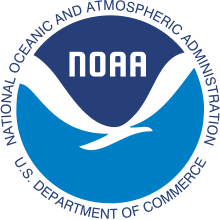
The National Oceanic and Atmospheric Administration is a U.S.A. scientific agency within the United States Department of Commerce that focuses on the conditions of the oceans, major waterways, and the atmosphere.

The Geophysical Fluid Dynamics Laboratory (GFDL) is a laboratory in the National Oceanic and Atmospheric Administration (NOAA) Office of Oceanic and Atmospheric Research (OAR). The current director is Dr. Venkatachalam Ramaswamy. It is one of seven NOAA Research Laboratories (RLs).

Oceanic and Atmospheric Research (OAR) is a division of the National Oceanic and Atmospheric Administration (NOAA). OAR is also referred to as NOAA Research.
The Arctic Research Office (ARO) a division of the National Oceanic and Atmospheric Administration (NOAA) run under the auspices of the Office of Oceanic and Atmospheric Research (OAR).
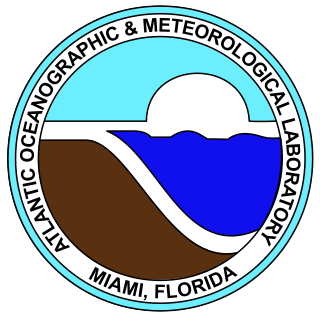
The Atlantic Oceanographic and Meteorological Laboratory (AOML), a federal research laboratory, is part of National Oceanic and Atmospheric Administration's (NOAA) Office of Oceanic and Atmospheric Research (OAR), located in Miami, Florida. AOML's research spans tropical cyclone and hurricanes, coastal ecosystems, oceans and human health, climate studies, global carbon systems, and ocean observations. It is one of seven NOAA Research Laboratories (RLs).

The Forecast Systems Laboratory (FSL) was a meteorological research and development laboratory in the National Oceanic and Atmospheric Administration (NOAA)/Office of Oceanic and Atmospheric Research (OAR). In October 2005, it was merged with five other NOAA labs to form the Earth System Research Laboratory.

The Great Lakes Environmental Research Laboratory (GLERL) is a laboratory in the National Oceanic and Atmospheric Administration (NOAA) Office of Oceanic and Atmospheric Research (OAR). It is headquartered in Ann Arbor, Michigan, with a subsidiary field station in Muskegon, Michigan.
The Pacific Marine Environmental Laboratory (PMEL) is a laboratory in the National Oceanic and Atmospheric Administration (NOAA) Office of Oceanic and Atmospheric Research (OAR). It is one of seven NOAA Research Laboratories (RLs). The PMEL is split across two sites in the Pacific Northwest, in Seattle, Washington and Newport, Oregon.

The Cooperative Institute for Arctic Research is designed to be a focal point for interactions between the National Oceanic and Atmospheric Administration (NOAA)/Office of Oceanic and Atmospheric Research (OAR) and the Arctic research community through the University of Alaska for research related to the Western Arctic/Bering Sea region.
The Cooperative Institute for Climate and Ocean Research (CICOR) formalizes a major collaborative relationship between the National Oceanic and Atmospheric Administration (NOAA) Office of Oceanic and Atmospheric Research (OAR) and the Woods Hole Oceanographic Institution (WHOI).
The Cooperative Institute for Climate Science (CICS) fosters research collaborations between the National Oceanic and Atmospheric Administration (NOAA)/Office of Oceanic and Atmospheric Research (OAR) Geophysical Fluid Dynamics Laboratory (GFDL) and the Princeton University. It is one of 16 NOAA Cooperative Institutes (CIs).
The Cooperative Institute for Limnology and Ecosystems Research (CILER) fosters research collaborations between the National Oceanic and Atmospheric Administration (NOAA) Office of Oceanic and Atmospheric Research (OAR) Great Lakes Environmental Research Laboratory (GLERL), Michigan State University (MSU), and the University of Michigan (UM). It is one of 16 NOAA Cooperative Institutes (CIs).
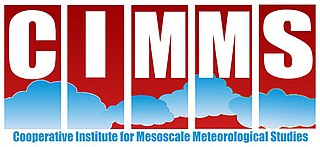
The Cooperative Institute for Mesoscale Meteorological Studies is a research organization created in 1978 by a cooperative agreement between the University of Oklahoma (OU) and the National Oceanic and Atmospheric Administration (NOAA). CIMMS promotes collaborative research between NOAA and OU scientists on problems of mutual interest to improve basic understanding of mesoscale meteorological phenomena, weather radar, and regional climate to help produce better forecasts and warnings that save lives and property. CIMMS research contributes to the NOAA mission through improvement of the observation, analysis, understanding, and prediction of weather elements and systems and climate anomalies ranging in size from cloud nuclei to multi-state areas.
The Cooperative Institute for Research in the Atmosphere (CIRA) is a scientific research institution at Colorado State University (CSU) that operates under a cooperative agreement with the National Oceanic and Atmospheric Administration (NOAA) Office of Oceanic and Atmospheric Research (OAR) and the National Environmental Satellite, Data, and Information Service (NESDIS). Atmospheric research at CIRA focuses on augmenting operational meteorology with advanced techniques in satellite observations and retrievals, numerical modeling and computational techniques, and data analysis, visualization, and storage. Along with NOAA, CIRA also partners with the National Science Foundation (NSF), the National Aeronautics and Space Administration (NASA), the National Park Service (NPS), and the Department of Defense (DoD).

The Joint Institute for Marine and Atmospheric Research (JIMAR) is an oceanic, atmospheric, and geophysical research institute that is sponsored jointly by the National Oceanic and Atmospheric Administration (NOAA) Office of Oceanic and Atmospheric Research (OAR) and the University of Hawaiʻi (UH). It is one of 16 NOAA Cooperative Institutes (CIs).
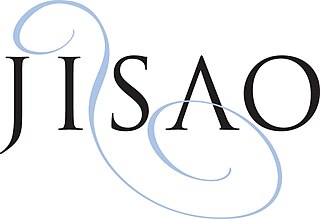
The Joint Institute for the Study of the Atmosphere and Ocean (JISAO) has existed since 1977 for the purpose of fostering research collaboration between National Oceanic and Atmospheric Administration (NOAA) Office of Oceanic and Atmospheric Research (OAR) and the University of Washington (UW). Dr. John K. Horne is the current director.

The Earth System Research Laboratory (ESRL) is a laboratory in National Oceanic and Atmospheric Administration's (NOAA) Office of Oceanic and Atmospheric Research (OAR). It is one of seven NOAA Research Laboratories (RLs) and is located in Boulder, Colorado.

The Northern Gulf Institute (NGI) is a National Oceanic and Atmospheric Administration (NOAA) Cooperative Institute started in October 2006. It is one of 16 NOAA Cooperative Institutes (CIs). The NGI is a partnership of six academic institutions and NOAA. The collaboration led by Mississippi State University (MSU), includes the University of Southern Mississippi (USM), Louisiana State University (LSU), Florida State University (FSU), the University of Alabama in Huntsville, and the Dauphin Island Sea Lab (DISL). The NGI defines the Northern Gulf of Mexico region as the upland, watershed, coastal zone, and coastal ocean areas from the Sabine River in Louisiana east to the Suwannee River in Florida.
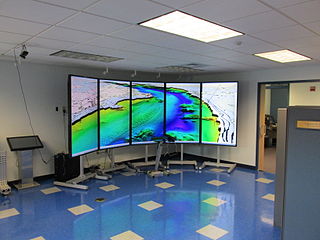
The Center for Coastal & Ocean Mapping (CCOM) / NOAA-UNH Joint Hydrographic Center (JHC) was founded in 2000 by Dr. Larry Mayer to find ways to process the massive amounts of data coming from sonar systems at rates commensurate with data collection; that is, to make the data ready for chart production as rapidly as the data could be collected.

Karen Kohanowich is a retired U.S. Naval officer and ocean research and technology program manager for the National Oceanic and Atmospheric Administration (NOAA)'s Office of Ocean Exploration and Research (OER). She was NOAA's Acting Director of the National Undersea Research Program (NURP) from 2006–2009, and served in various roles at OER, including Acting Deputy and Undersea Technology director, until retiring in 2018. In July 2006, she became an aquanaut on the NASA Extreme Environment Mission Operations 10 crew.
